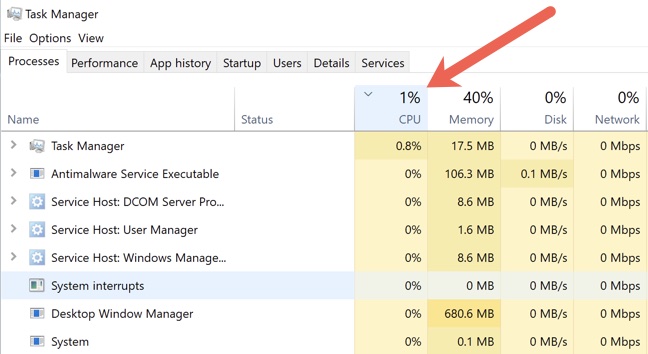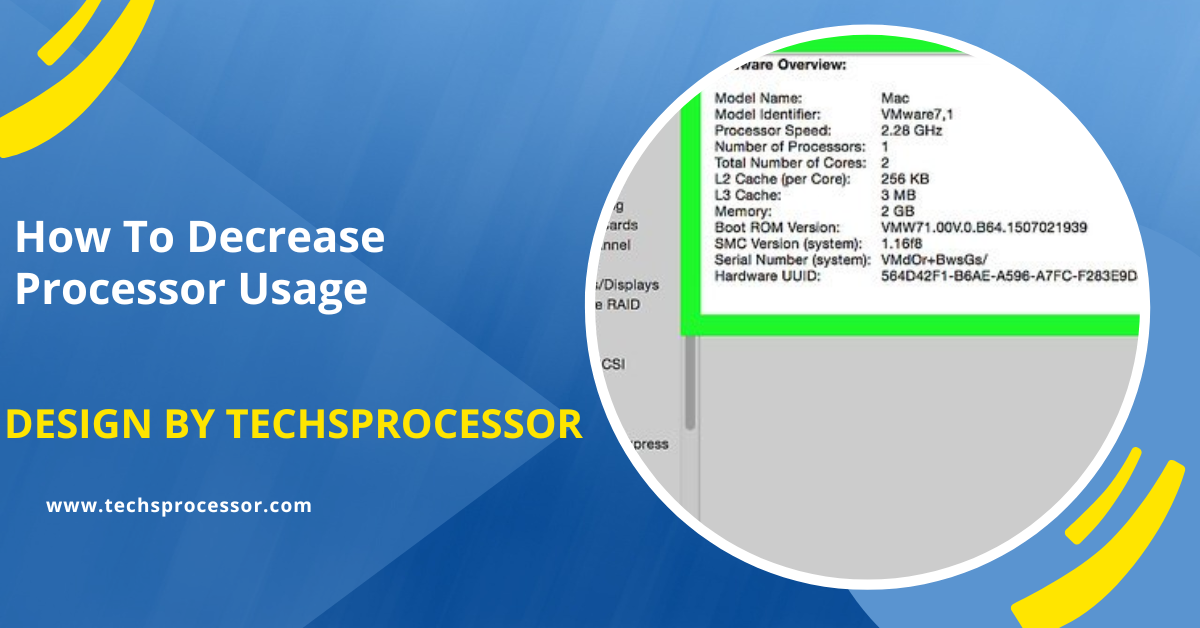How To Decrease Processor Usage – A Complete Guide for Boosting Performance!
To decrease processor usage, close unnecessary programs, limit background processes, adjust power settings, and update software regularly for optimal performance.
In this guide, we’ll explore practical steps you can take to decrease processor usage and improve the overall performance of your computer.
Identify Resource-Intensive Programs:

The first step in reducing processor usage is identifying which programs are consuming the most CPU power. Windows Task Manager and macOS Activity Monitor provide insights into active processes and their CPU usage.
Steps:
- Windows: Press Ctrl + Shift + Esc to open Task Manager. Go to the “Processes” tab and sort by CPU usage to see which apps are using the most power.
- Mac: Open Activity Monitor from the Applications > Utilities folder. Sort by CPU column to find resource-heavy processes.
Solution:
- Close or disable unnecessary programs or apps that are consuming high CPU resources. Consider replacing them with lighter alternatives if possible.
Disable Startup Programs:
Many programs automatically start running in the background when you boot your computer. Disabling unnecessary startup programs can significantly reduce CPU usage.
Steps:
- Windows: Open Task Manager, click on the “Startup” tab, and disable unnecessary programs.
- Mac: Go to System Preferences > Users & Groups > Login Items, and uncheck programs you don’t need at startup.
Solution:
- Only enable essential programs to run at startup. This frees up CPU resources right from the beginning.
Adjust Power Settings:
Power settings can influence how your processor works. Adjusting these settings can help control CPU usage, especially for laptops and portable devices.
Steps:
- Windows: Go to Control Panel > Power Options. Select “Balanced” or “Power Saver” mode to reduce power consumption.
- Mac: Go to System Preferences > Energy Saver, and adjust the settings to reduce energy usage.
Solution:
- Switching to a balanced or power-saving mode can prevent your CPU from running at full throttle all the time, reducing usage and heat.
Also Read: What Is The Processor In A Mac Computer – A Complete Overview!
Limit Background Processes:
Many applications and services run in the background, consuming CPU resources without your knowledge. Limiting background processes can help free up CPU power.
Steps:
- Windows: Use Task Manager to find unnecessary background processes and end them.
- Mac: Use Activity Monitor to find background processes that you don’t need and close them.
Solution:
- Disable non-essential background apps, such as cloud services, sync tools, or messaging apps that are always active.
Update Software and Drivers:
Outdated software, drivers, and operating systems can cause high processor usage due to inefficiencies or bugs. Regular updates help optimize your system’s performance.
Steps:
- Windows: Go to Settings > Update & Security > Windows Update, and check for updates. Also, update drivers via Device Manager.
- Mac: Go to System Preferences > Software Update to ensure macOS and all apps are up to date.
Solution:
- Keeping your system and software updated ensures smoother performance and reduces unnecessary CPU usage.
Clean Your System From Malware and Viruses:
Malware and viruses can silently consume CPU resources. Regular scans and cleaning can reduce the processor’s workload and protect your system.
Steps:
- Windows & Mac: Install reliable antivirus software like Malwarebytes or Bitdefender. Perform regular scans to detect and remove threats.
Solution:
- A clean system is essential for optimal performance. Eliminate malware and viruses to prevent them from eating up CPU power.
Adjust Visual Effects:
Fancy visual effects on your operating system, like animations and transparency, can use up significant CPU power. Adjusting these settings will reduce processor strain.
Steps:
- Windows: Go to Control Panel > System > Advanced System Settings. Under the Performance section, select “Adjust for best performance” to turn off unnecessary visual effects.
- Mac: Go to System Preferences > Accessibility > Display and reduce transparency.
Solution:
- Turning off or reducing visual effects can free up CPU resources and improve performance.
Check for CPU-Intensive Updates and Tasks:

System updates, backups, and scheduled tasks can cause temporary spikes in CPU usage. Schedule these tasks for when you’re not actively using the computer.
Steps:
- Windows & Mac: Use the built-in task scheduler or backup settings to manage when updates and backups occur.
Solution:
- Set heavy tasks, such as software updates, virus scans, or backups, to run during idle
times to avoid overloading your CPU when you need it most.
Upgrade Your Hardware:
If you’ve tried all of the above and still experience high CPU usage, it may be time to upgrade your hardware. This includes adding more RAM or even upgrading your processor.
Solution:
- RAM Upgrade: Adding more memory allows your system to handle more tasks simultaneously without overloading the CPU.
- Processor Upgrade: If your processor is outdated, consider upgrading to a newer, faster model to handle demanding applications more efficiently.
Optimize Your Workflows:
Sometimes, simply optimizing how you use your computer can reduce CPU load. Avoid running too many heavy applications at once and close programs when you’re not using them.
Solution:
- Manage your tasks efficiently, and avoid multitasking with resource-heavy apps like video editors, games, or large spreadsheets to prevent CPU overloading.
FAQ’s
1. How can I identify programs using too much CPU?
You can use Windows Task Manager or macOS Activity Monitor to check which programs are consuming the most CPU power.
2. What should I do with unnecessary startup programs?
You can disable unnecessary startup programs using Task Manager (Windows) or System Preferences (Mac) to free up CPU resources.
3. How do power settings affect processor usage?
Adjusting your power settings to “Balanced” or “Power Saver” can help reduce CPU usage, especially on laptops.
4. Why is it important to update software and drivers?
Updating software and drivers ensures optimal performance, fixes bugs, and helps reduce unnecessary CPU load.
5. How does malware impact CPU usage?
Malware consumes CPU resources silently. Regular system scans and cleaning with antivirus software help reduce processor usage.
Conclusion
Decreasing processor usage is essential for maintaining your computer’s performance, extending its lifespan, and ensuring smoother operation. By following these steps—identifying resource-hogging programs, managing startup apps, adjusting settings, and upgrading hardware when necessary—you can effectively reduce CPU strain and keep your system running efficiently.
